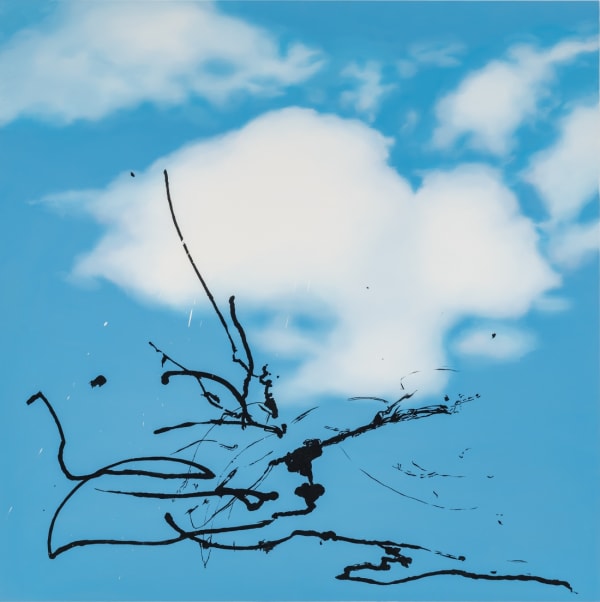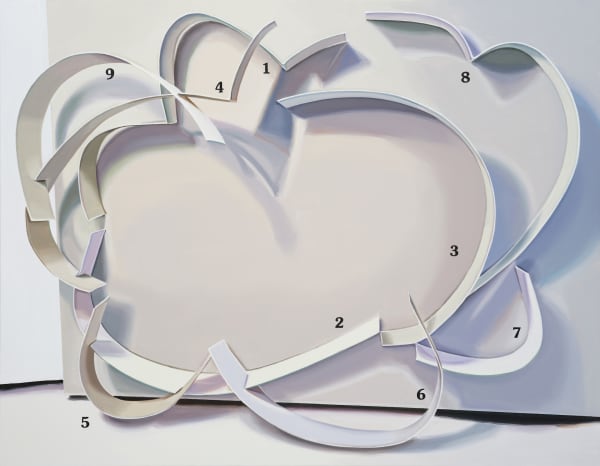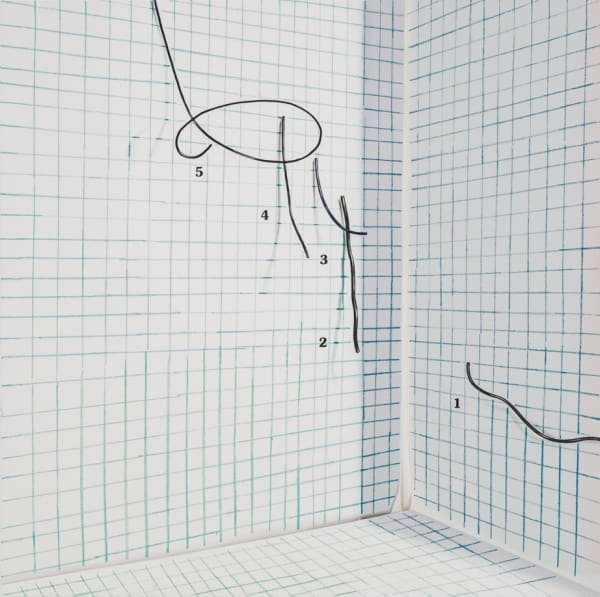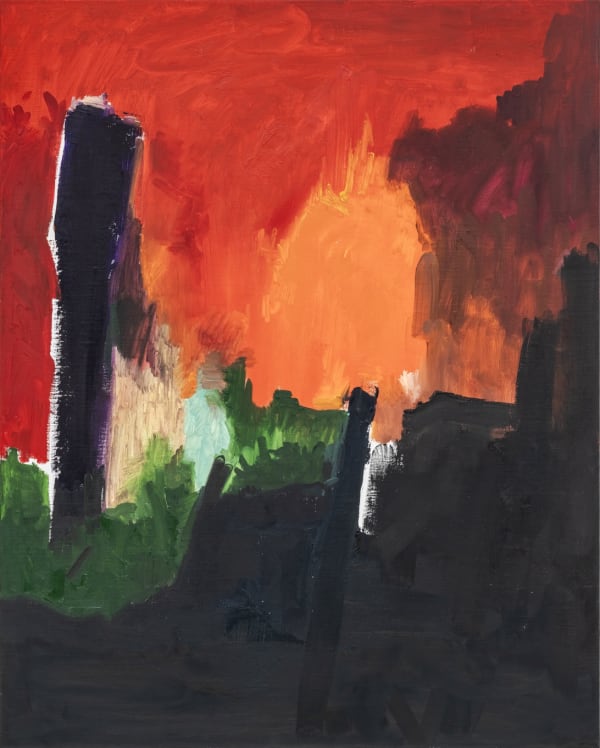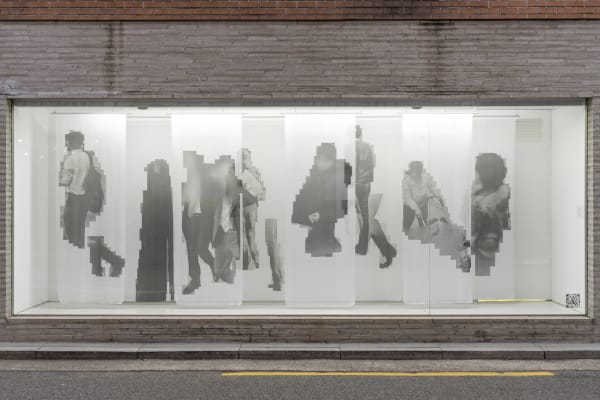Yellow Arrows: Kim Su Yeon, Cho Jung Hwan, Hong Ju Hee
Chapter II is pleased to present Yellow Arrows, a group exhibition of works by the 7th Chapter II Residency artists in Yeonnam-dong, Seoul. It will offer an opportunity to examine prior achievements and anticipate the journey ahead of three selected artists, Kim Su Yeon, Cho Jung Hwan and Hong Ju Hee.
When it comes to Jackson Pollock (1912–1956), one of the main critiques is articulated in the sentence, “Something was about to happen but disappeared.” It gives a mythical narrative on his ‘images of the unknown’ coincidently appearing by paints evenly splashed over a canvas and the sense of spontaneity of his infamous dripping movement. The imaginary force triggered by the declaring appraisal instantly transforms the surface of the canvas into a profound abyss. Hence, it enables the audience to realize that numerous narratives are dormant underneath the thin physical layers. Critiques and observation allow artworks to reach ‘the second completion’ since through the act of appreciation of others, the intention of artists eventually attain its objective and appealing voice that leads their creative activity to have an actual closure.
After contemplating the critique more, it becomes clear that the phrase expresses frustration for how impossible our limited information allows us to fathom shapes, trajectories and the reason for the disappearance of unknown objects that certainly exist somewhere else. All sorts of speculations and opinions on mysterious phenomena occurring around the world also develop similarly to it, and by extension, diverse hypotheses drawn by discovered evidence and clues increase the desire to approach truth. The criticism of retrospective exhibitions argues that they only focus on chronically summing up an artist’s accomplishment without aesthetic inspiration. Nevertheless, they have taken their own position as one of the predominant exhibition styles because they efficiently show how specific modes and techniques standing out during an era have evolved into the following generation’s tendency. On the other hand, if one’s experience and seeking are still premature as an artist, the person’s exhibition inevitably depends on curation more. Thus, it is considerably varied according to its curatorial approach and criteria.
The process of selecting works for a group exhibition parallels coming up with a plausible story by imagining a situation or character dimly wavering below the water surface, observing them and collecting corresponding theories and knowledge. To select several pieces to display in a limited space despite plenty of other potential options, not only an in-depth understanding of participating artists but also a careful reflection on what context the exhibition is founded on and how it can be convincing as a complete exhibition are required. In the current circumstance where whoever has unrestricted access to a camera, the overflow of images is a fair consequence; besides, in the present time when the rumor about the demise of painting appearing at the end of the century sounds so stale, artists are demanded to censor and guarantee their authenticity by themselves even from the early phase of creation. The majority of the cases dealing with the situation are either avoiding the existing images as much as possible or confirming the references of adoption. To establish a unique artistic philosophy, self-awareness of source for creation, differentiating techniques and searching particular media may sound the most attractive solutions, albeit it means a tedious road of resisting skepticism and impatience emerging at every crisis.
In this regard, Yellow Arrows attempts to let the artists encounter their own works selected depending on fresh perspectives and contexts, reconsider the origin of instant motives conveyed in them and find a stepping stone to construct their future direction. Neither underlining a specific period nor revealing their solid reciprocal connectivity, the presented works encourage the viewers to spend a long time exploring and evoke a constant tension in the equally divided space.
Kim Su Yeon (b.1986) received a BFA and an MFA in Painting from Kookmin University. Her solo exhibitions took place at several leading art institutions, including P21 (2022), Gallery 2 (2021, 2018), SH Art Project (2019) and Aando Fine Art (2016). She also attended multiple group exhibitions at Esther Schipper Seoul/Berlin (2023), Artcenter Whiteblock (2023), Ulsan Art Museum (2022), Museumhead (2021), CAN Foundation Old House (2020), OCI Museum of Art (2020), Illmin Museum of Art (2019), Busan Museum of Art (2018).
Cho Jung Hwan (b.1982) received a BA in Architecture from Dong-eui University and a BFA in Painting from Busan University and an MFA in Painting from Hongik University. His solo exhibitions are held at France Art Space (2019), Gallery Lee (2015) and Gallery Mungcle (2015). He attended group exhibitions at numerous art establishments such as Busan Museum of Art (2023), Space Dot (2021), Openspace Bae (2020), Fukuoka Asian Art Museum (2020), DOT Museum (2020) and Chang Ucchin Museum of Art Yangju City (2016).
Hong Ju Hee (b.1988) received a BA in Visual Design from Seoul Women’s University, an MA in Visual Communication from the Royal College of Art, and a PhD candidate in Design from Seoul University. Her solo exhibition opened at WWW Space (2022); she also participated in several group expositions at Solsol Center (2022), WRM Space (2021), Seoul Design Festival (2021), ACC Residency (2019) and The Royal College of Art (2018, 2017).


